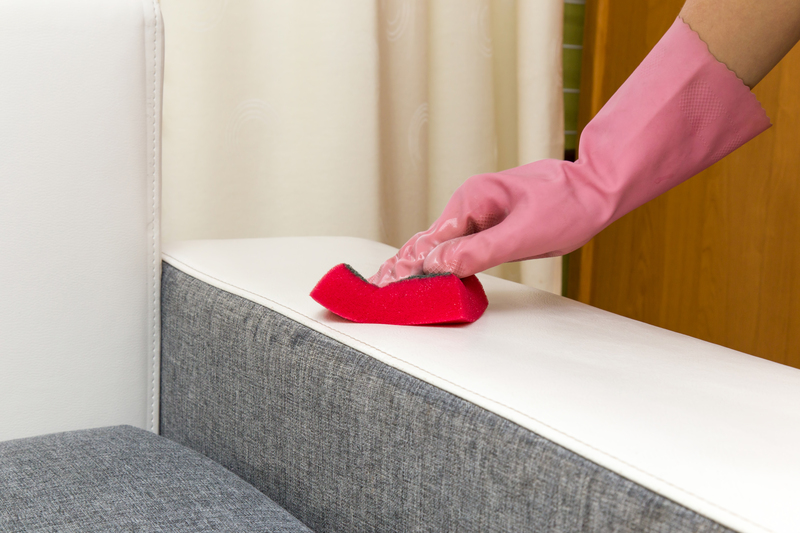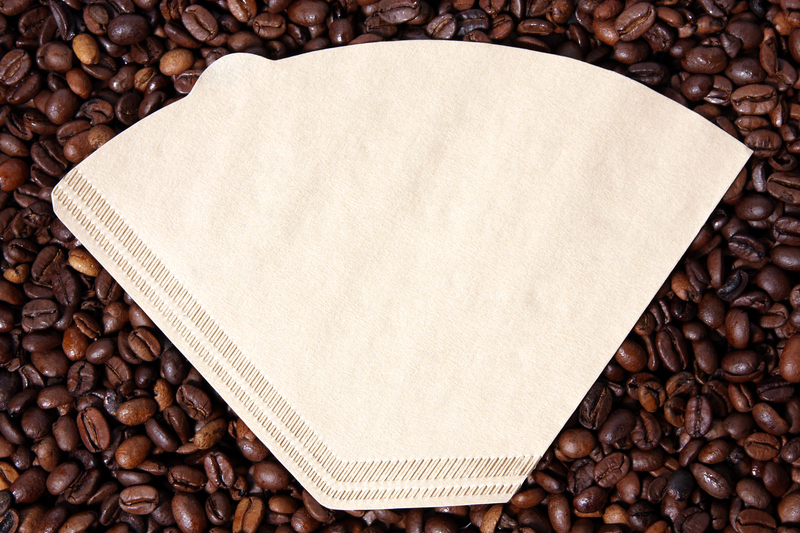How Efficient is Steam Cleaning for Leather Sofas
Posted on 19/05/2025
How Efficient is Steam Cleaning for Leather Sofas?
Cleaning your leather sofa is essential to keep it looking beautiful, feeling comfortable, and lasting longer. With so many cleaning options available, homeowners often ask, "How efficient is steam cleaning for leather sofas?" This article provides an in-depth analysis of steam cleaning as a method for maintaining leather couches, examining its effectiveness, safety, and the best practices for ensuring your investment remains in top condition.

Understanding Steam Cleaning
What is Steam Cleaning?
Steam cleaning uses heated water vapor to loosen dirt, grime, bacteria, and allergens from surfaces. It's widely used for carpets, tiles, and fabric upholstery, gaining popularity as an eco-friendly and chemical-free option. But how does this method fare when it comes to caring for leather sofas?
Types of Leather Used in Sofas
Before diving into leather sofa steam cleaning efficiency, it's crucial to recognize the different leather types, as not all leathers react the same way to moisture or heat. The most common types include:
- Aniline leather - Natural look, highly absorbent, and more sensitive to water and stains.
- Semi-aniline leather - Slightly treated, retains some natural characteristics but is a bit more resistant to stains.
- Pigmented (protected) leather - Coated with a protective polymer, making it the most durable and suitable for steam cleaning methods.
The Efficiency of Steam Cleaning Leather Sofas
Benefits of Steam Cleaning Leather Sofas
- Thorough Deep Cleaning - Steam penetrates the leather's surface and can remove stubborn dirt, bacteria, and germs that typical wiping methods might miss.
- Eco-Friendly - No use of harsh chemicals makes steam cleaning environmentally responsible and safe for households with pets and children.
- Quick Drying - Unlike traditional wet cleaning, properly used steam leaves the surface just slightly damp, reducing the risk of water damage.
- Deodorization - The hot steam effectively neutralizes odors absorbed in the material, leaving your sofa smelling fresh and clean.
- Allergen Control - Steam cleaning can kill dust mites and other allergens commonly embedded in the nooks and seams of the couch.
Potential Drawbacks of Steam Cleaning Leather Sofas
- Risk of Damage - Excessive steam or improper technique can cause leather to dry out, wrinkle, or even crack over time.
- Delicate Leather Sensitivity - As mentioned, certain leathers, especially aniline types, are more susceptible to heat and moisture. They require extreme caution or should avoid steam cleaning entirely.
- Limited Stain Removal - Oil-based stains may not be fully remedied by steam alone; special leather cleaning products may still be necessary.
Steam Cleaning vs. Traditional Leather Sofa Cleaning
Traditional methods for leather couch cleaning typically involve wiping with a damp cloth, using a vacuum for dust, and applying dedicated leather soap and conditioner. So, how does steam cleaning measure up?
| Method | Pros | Cons |
|---|---|---|
| Steam Cleaning |
|
|
| Traditional Cleaning |
|
|
Best Practices for Steam Cleaning Leather Sofas
To maximize efficiency and minimize risks, follow these essential steam cleaning tips for leather sofas:
1. Check Manufacturer's Guidelines
Always start by reading your sofa's warranty and care instructions. Many furniture manufacturers outline recommended cleaning procedures and materials. Some may specifically state that steam cleaning will void the warranty.
2. Perform a Patch Test
Choose an inconspicuous area under the sofa or on the back. Apply steam lightly and observe how the leather responds after a few hours. Look for discoloration, warping, or any adverse changes.
3. Prepare the Surface
- Vacuum the sofa thoroughly to remove dust and debris.
- Remove cushions and accessories.
- Wipe the surface with a dry, soft cloth.
4. Use the Proper Steamer
Opt for a high-quality handheld steam cleaner that allows you to control the steam intensity. Attach a microfiber cloth to prevent direct contact between the nozzle and leather, reducing the risk of overheating.
5. Apply Steam Sparingly
- Work in small sections.
- Keep the steamer moving--never linger in one spot.
- Use the lowest effective steam setting.
6. Wipe & Condition
Immediately after steam cleaning, wipe the area with a soft, dry microfiber towel. Apply a high-quality leather conditioner while the leather is still slightly warm and porous to help it absorb moisture, restore its suppleness, and protect it from drying.
How Often Should You Steam Clean Leather Sofas?
Leather is a natural material and requires regular, yet gentle, maintenance. Steam cleaning should not be your go-to weekly method. For optimal results:
- Routine cleaning (dusting and wiping): weekly
- Deep steam cleaning: Every 6-12 months, or as needed, depending on usage, exposure to dust or pets, and household allergies.
Is Steam Cleaning Safe for All Leather Sofas?
Not all leather sofas respond equally to steam cleaning. As discussed, protected/pigmented leather fares better than aniline and semi-aniline varieties. Additionally, faux or bonded leathers may not be suitable for high-heat cleaning.
Professional advice: If in doubt, consult with your sofa manufacturer or a leather cleaning expert to determine if steam is suitable for your particular piece.
DIY vs. Professional Steam Cleaning of Leather Sofas
Advantages of DIY Steam Cleaning
- Cost-effective over time
- Convenient and flexible
- You control the process and products used
Advantages of Professional Leather Sofa Cleaning
- Trained to identify leather type and proper method
- Industry-standard equipment is often more efficient and safer
- Many companies offer satisfaction guarantees
Remember that professional cleaners often combine steam with specialized leather treatments, maximizing cleaning without compromising the integrity of delicate upholstery.
Common Mistakes to Avoid When Steam Cleaning Leather Sofas
- Over-soaking: Using excessive steam can saturate the leather, leading to warping, puckering, or mold development.
- Not using a cloth barrier: Direct nozzle-to-leather contact increases the risk of burns and drying.
- Neglecting conditioning: Leather must be replenished with oils after cleaning, or it will become brittle over time.
- Ignoring drying: Always let your sofa air dry naturally--never use a hairdryer or direct sunlight as this can cause fading and cracks.

Frequently Asked Questions about Steam Cleaning Leather Sofas
Can steam cleaning completely sanitize a leather sofa?
Yes, steam cleaning can kill bacteria, mites, and some viruses with its heat. Combined with proper wiping and conditioning, it offers a highly sanitizing effect.
Does steam cleaning remove persistent stains?
Not always. While it helps with surface dirt and light staining, oil-based or deep-set stains may require specialized leather stain removers.
Will steam cleaning damage my leather sofa?
When used with caution on protected or pigmented leathers, steam cleaning is generally safe. However, overuse, excessive heat, or cleaning delicate leathers can result in damage.
What's the ultimate way to clean and care for my leather couch?
A combination of gentle dusting, periodic steam cleaning, and regular conditioning is best. Never skip patch testing and always finish with a leather conditioner to seal in moisture.
Conclusion: Is Steam Cleaning Efficient for Leather Sofas?
So, how efficient is steam cleaning for leather sofas? When done correctly and on the right type of leather, steam cleaning is an efficient, deep-cleaning, and eco-friendly solution for your leather sofa care. It can breathe new life into your couch by removing ingrained dirt and allergens while preserving its natural elegance.
However, it is not a one-size-fits-all solution--owners must pay attention to leather type, use proper technique, and always condition after cleaning. When in doubt, enlisting professional services can ensure your leather couch remains luxurious, hygienic, and inviting for years to come.
For more tips on leather sofa cleaning efficiency and maintenance guides, stay tuned to our cleaning advice hub.





